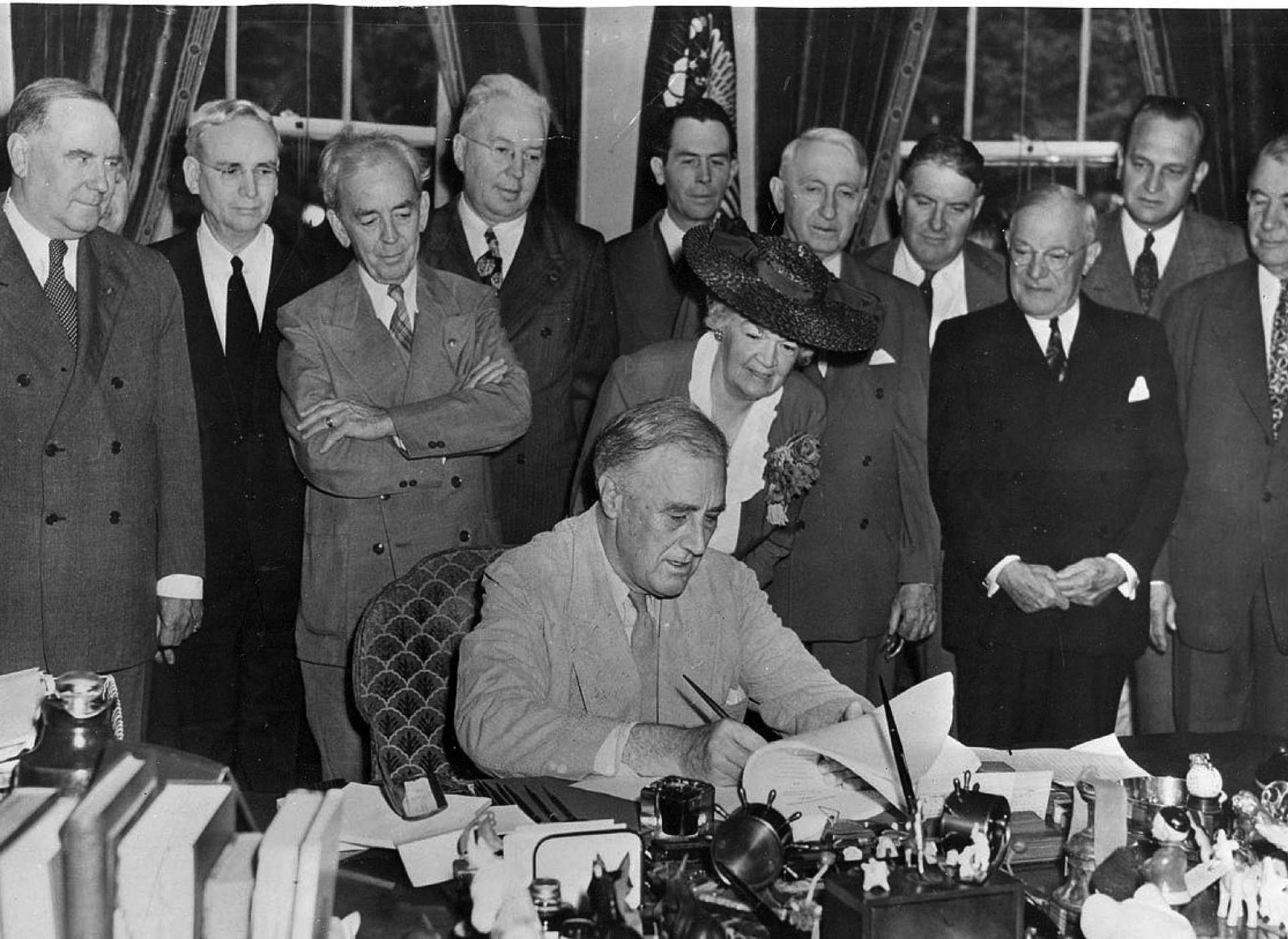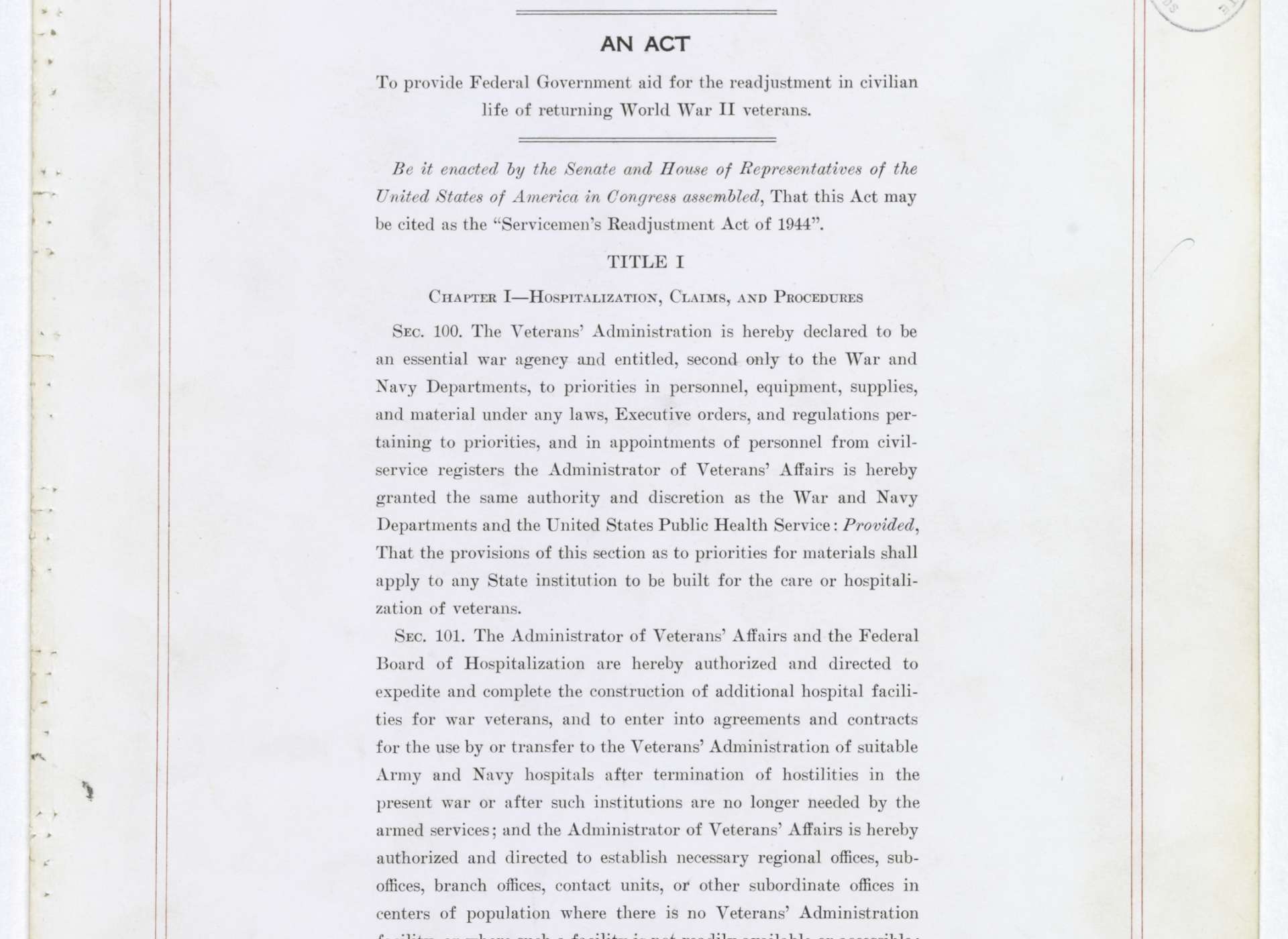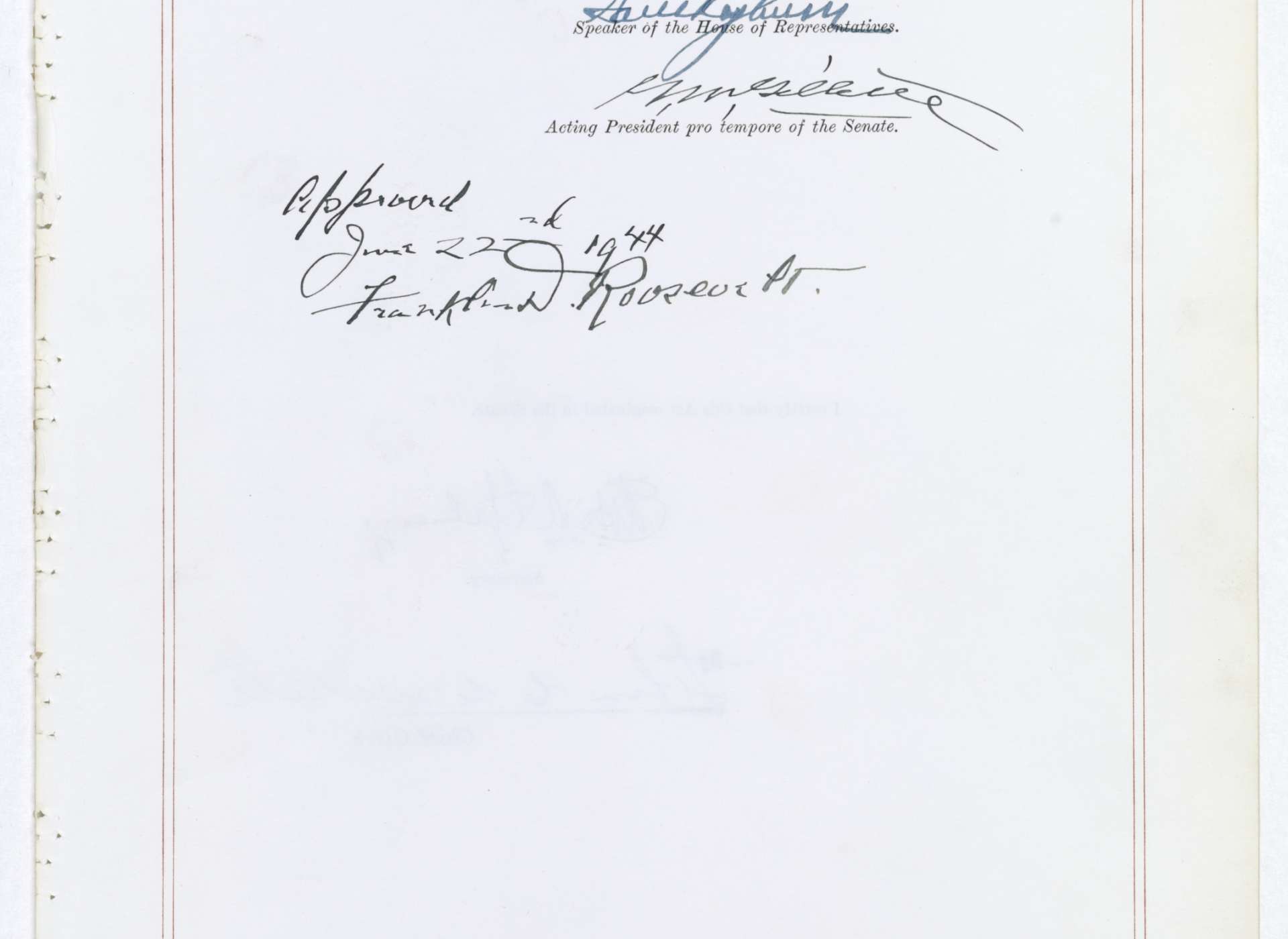The GI Bill: Soldiers Return Home
With memories of 1932’s Bonus March, in which veterans of World War I marched on Washington, D.C. to demand early payment of a bonus for their service, members of both parties in Congress sought ways to help soldiers readjust to civilian life following World War II. Motivations for some form of assistance ranged from rewarding America’s servicemen to preventing another depression. The result was the Servicemen's Readjustment Act of 1944, better known as the GI Bill of Rights. This act provided returning servicemen with funds for education, government backing on loans, unemployment allowances, and job-finding assistance.
Providing the unemployment payments proved to be the most difficult portion of the bill and nearly held up its passage. Critics of the allowance stated that the payments would lessen recipients’ motivation to find work or attend school. The government ended up paying out less than 20 percent of the funds set aside for unemployment payments. A far larger number of veterans took advantage of the bill’s provisions for education and home loans.
A veteran with at least 90 days of service could receive up to $500 towards an education or training program. In 1947, World War II veterans accounted for nearly half of all college admissions and half of all World War II veterans participated in some form of education or job training with the benefits. In 1950, the total number of students graduating from college increased by more than 300,000. In response to these increased numbers, state universities increased the size of their dormitories and classroom buildings.
Home ownership grew rapidly during the postwar years as veterans received a loan guaranty from the government. The guaranty made veterans safer investments for banks since the government would pay back either 50 percent of the loan or $2,000 if the recipient failed to pay for the loan. These loans could pay for the purchase, construction, or improvement of property. Additionally, a veteran could purchase a farm or farm equipment with the loan. This program proved especially popular. The Veterans Administration guaranteed over 2 million home loans by 1950.
The bill was lengthy and complicated, and misunderstandings were prevalent as servicemen returned home. One of the provisions stated that a veteran could not receive two monetary programs at the same time. Therefore, a veteran could receive education funding and a loan guaranty, but not education funding and unemployment benefits because that money was not paid back. A great deal of literature was devoted to explaining the loan guaranty and the types of education that could be paid for with the GI Bill.
The growth of colleges and universities, an educated workforce, and the expansion of home ownership inspired major changes in American society. Colleges were no longer designed for a small collection of elites. The increased exposure to universities by veterans from rural areas and inner cities opened the door to careers that seemed unattainable in the 1930s. Loans available for home construction led to an expansion of suburban areas and increased infrastructure for transportation.
Secondary Sources
The G.I. Bill: The Law That Changed America by Milton Greenberg
Soldiers to Citizens: The G.I. Bill and the Making of the Greatest Generation by Suzanne Mettler
The GI Bill: The New Deal for Veterans by Glenn Altschuler
To Hear Only Thunder Again: America's World War II Veterans Come Home by Mark D. Van Ells
Over Here: How the G.I. Bill Transformed the American Dream by Edward Humes


